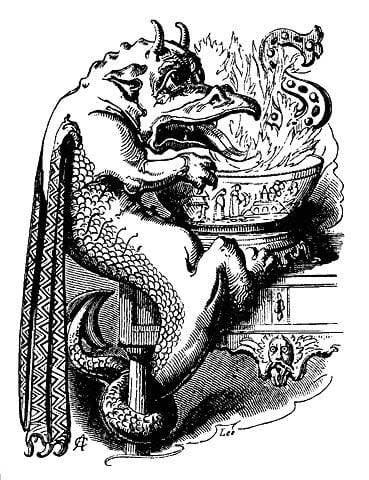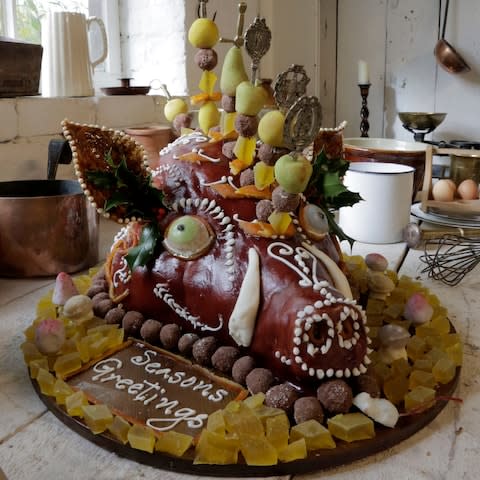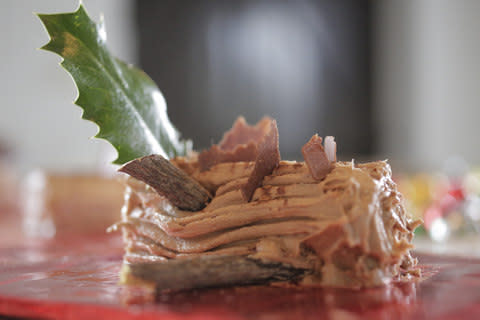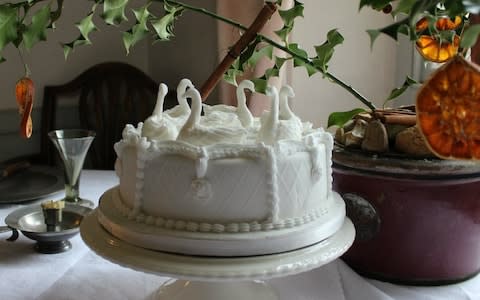The lost traditions of Christmas: ghost stories, roast beef and harlotry

If 2017 has taught us anything, it is that nothing is sacrosanct – and that includes Christmas, a season imbued with tradition and cultural heritage. The Elf on the Shelf and Christmas Eve box, both sell-out trends this year, threaten to uproot decades of tradition, shifting celebrations earlier and extending them for longer. It seems that December 25th is now more like a month than a day.
However, this new, longer Christmas may not be so untraditional. The history books show that the Christmas Day we know today wasn't born until the Victorian era. Until the 1840s, Christmas used to be about much more than December 25, involving weeks of festivities, such as the Feast of Fools, Christmas Eve ghost stories, and infamous Twelfth night parties. Alcohol flowed, food abounded and children were nowhere to be seen.
Here are some of the Christmas traditions that have been lost with time...
Christmas Eve games and ghouls
Forget the Christmas Eve box, the night before used to be a time for games and ghost stories, with families gathering around the hearth for an evening's entertainment.
Popular activities included Snapdragon and Bullet Pudding. The former involved putting currants in a bowl, dousing them in brandy and setting fire to them. Participants would then risk the skin on their fingertips to pull the currants out and eat them, thus extinguishing the flames.

Bullet Pudding was a bit like today's Flour Game, with a bullet rather than a sweet placed on top of a pile of flour that is sliced until it falls. The person who prompted the fall had to remove the bullet with their mouth. "It was quite a big part of Christmas and no one really does it anymore," says Dr Annie Gray, a food historian who appears on The Sweet Makers At Christmas, a BBC Two documentary about Yule traditions that airs on Friday. "The idea of getting together and playing games has been replaced by watching television."
Another pre-Christmas fireside activity was telling ghost stories. "Nothing satisfies us on Christmas Eve but to hear each other tell authentic anecdotes about spectres," Jerome K Jerome wrote in Told After Supper, an anthology of Christmas ghost stories. "It is a genial, festive season, and we love to muse upon grave, and dead bodies, and murders, and blood."
Charles Dickens would publish ghost stories around this time of the year, which the BBC later turned into creepy shows for candlelight.
Roast beef, plum pudding and a boar's head cake
Turkey didn't become the main Christmas meal until the 1960s, according to Dr Gray. A traditional Christmas feast instead consisted of roast beef and plum pudding. In wealthy households this would be accompanied by game, poultry, ice cream and little biscuits for dipping in punch. Poorer families would save all year for a goose, which they would cook on Christmas morning in their local baker's oven.

Well into the 19th Century, another central piece of the Christmas day table was the boar's head cake. Queen Victoria insisted on having one of these ornate, lifelike deserts on her table every year. As well as being dramatic in appearance, the puddings were brought out to a lavish ceremony.
"At Oxford it was carried in by the strongest of the guardsmen, singing a Christmas carol, and preceded by a forester, a huntsman, and a couple of pages dressed in silk and carrying the indispensable mustard," said an 1873 essay in Harper's titled "Christmas throughout Christendom".
Boxing Day
Boxing Day was formerly known as Saint Stephen's Day, as it is still known in Ireland. The exact origin of the name "Boxing Day" is unknown, but it first entered into the Oxford English Dictionary in the 1830s. The description explained that it was a day when a "Christmas box" was given to postmen, errand-boys and servants. It is believed to have been a time of thanks for waiting staff who would work on Christmas Day itself.
As part of this tradition, poorer people would collect money on Boxing Day in the way contemporary trick-or-treaters do. "Lowly paid tradespeople would make a clay box and basically beg," says Emma Dabiri, a social historian who also appears on The Sweet Makers at Christmas. "They would go house to house and be given coins that went in the box. When it was full, they would smash it."
The money they collected on December 26 was so significant that it would help in their survival for the rest of the year.
Yule log
Chocolate Yule logs eaten in the winter months stem from a much earlier tradition of an actual log. The Yule log was a large piece of wood taken from a birch tree selected on Candlemas day, February 2, the year before. Up to the Jacobean era, this was the last day of the Christmas period.
The Yule log would be brought into the house on Christmas Eve and placed in the hearth while the family gathered and sang carols. It was then kindled with a piece of the previous year's Yule log that had been saved to link the two festive seasons together. It burnt slowly through the 12 days of Christmas.

A similar tradition called the Ashen Faggot was practiced in Devon and Somerset, which involved lighting a bundle of ash sticks, called a faggot, on Christmas Eve whilst singing carols. People believed households that didn't burn one would be plagued by years of bad luck.
The Yule log ritual was eventually replaced with chocolate cakes, from a Nordic tradition, and Christmas trees. "The Yule-block, or log, with its warm welcome, extending even to the poor and the stranger as they gathered around the hospitable board, is being gradually supplanted by the Christmas-tree, whose introduction into England is comparatively of recent date," said Harper's in 1973.
Twelfth cake
Eaten on January 6 at a Twelfth night party, the Twelfth cake was a precursor to the Christmas cake. An ancient tradition, the desert actually pre-dates sponge cake and would have originally been made of a heavy fruit dough with icing, not unlike a giant hot cross bun.
The cakes were decorated with anything from milkmaids and palaces to stars, dogs and fish. "You name it and it goes on," says Dr Gray. "It has nothing to do with Christmas a lot of the time. Queen Victoria had one with a full hunting team and another with a bucolic summer picnic."
There was always something hidden inside the Twelfth cake, as with the coin in today's Christmas puddings. In the Medieval era it there would have a dried bean and dried pea hidden in the dough, and those who discovered them were crowned "bean king and pea queen". In the 17th Century, the things to find included "forked sticks for the coal and a rag for the slut" according to Dr Gray.

By the 18th Century, there were playing cards with notable and political characters of the year on them, which would be pulled out of a hat and used for party games. A precursor to Christmas crackers, jokes would also be hidden within the Twelfth cake. "Some of them are really funny and some awful," says Dr Gray.
Examples from the 1830s include:
Q: "When is a cheese most like college?" A: "When it's Eton."
Q: "Why is a lover like a gooseberry?" A: "Because he's easily made a fool of."
"Those reading them would have been somewhat inebriated as they would be at a Twelfth night party," says Dr Gray. "The Twelfth party was a really big thing. Nobody going on diets or down the gym just because it happens to be January."
Alcohol and adults
Our contemporary idea of Christmas as a family-centred day was born in the Victorian era, when the focus was shifted to children. Today, admittedly, Christmas parties and New Years Eve stretch out the festivities, but December 25 remains the pinnacle.
Until the mid-1840s, that wasn't the case, however. Christmas used to be a weeks-long boozy affair.
Dr Gray recalls a 14th Century description of Christmas as "a season of gluttony, harlotry and lechery." "It was very much about adults, sleeping with inappropriate people," she says. "It was basically really, really alcoholic."
Exemplary of the season's hedonism was the medieval Feast of Fools. A celebration that would occur in December, it was a time when people could undergo "a brief social revolution" and ignore the norms people were expected to abide by. The debauchery included blasphemy, songs, dancing and feasting. As time wore on, the celebration was condemned and, in the 15th Century, it was prohibited.
The Sweet Makers At Christmas airs on Friday December 15 at 9pm on BBC Two



